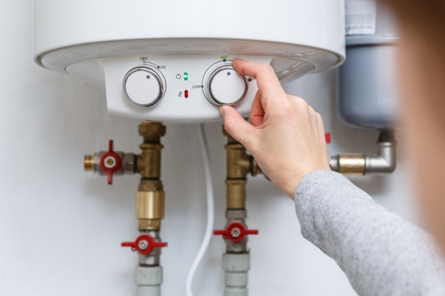What Influences Your Protective Aviation Insurance Premiums?
When it comes to protective aviation insurance, understanding what influences your premiums is crucial for effective financial planning. Protective aviation insurance is designed to cover a wide range of risks associated with flying, from liability for passenger injuries to damage to the aircraft itself. However, the premiums for these policies can vary significantly based on numerous factors. In this blog, we’ll delve into the key elements that affect your protective aviation insurance premiums, helping you make informed decisions about your coverage.
Type of Aircraft
The type of aircraft you own or operate is one of the most significant factors influencing your insurance premium. Different aircraft have varying values, performance capabilities, and associated risks.
Factors to Consider:
- Make and Model: More expensive or high-performance aircraft typically incur higher premiums due to their increased risk profile.
- Age of the Aircraft: Older aircraft may require more maintenance, and if they are not equipped with modern safety features, they can attract higher rates.
- Usage Type: The intended use of the aircraft (personal, commercial, training, etc.) can also affect the premium. Commercial operations usually come with higher risks and, consequently, higher premiums.
Pilot Experience and Qualifications
The experience and qualifications of the pilot play a crucial role in determining insurance premiums. Insurers assess the pilot’s training, flight hours, and overall flying history to gauge risk.
Key Considerations:
- Total Flight Hours: More experienced pilots generally pay lower premiums. Insurers often look for a minimum number of flight hours, particularly in the type of aircraft being insured.
- Certifications and Ratings: Additional certifications (such as instrument ratings or multi-engine ratings) demonstrate a pilot’s proficiency and can lead to discounts.
- Safety Record: A history of accidents or incidents can increase premiums significantly. Conversely, a clean record can help lower costs.
Flight Operations
How and where you operate your aircraft can significantly impact your insurance premiums. The risk associated with your flight operations is closely monitored by insurance providers.
Operational Factors:
- Geographic Location: Areas with high traffic, challenging weather conditions, or increased risk of accidents can lead to higher premiums. For instance, flying in congested urban areas typically presents more risk than in rural locations.
- Flight Frequency: The more often you fly, the greater the risk, which can increase your premiums. Insurers may ask for an estimated number of flight hours or trips annually.
- Type of Operations: Different operations (e.g., charter flights, cargo transport, flight training) carry different risk levels, affecting the premium structure.
Coverage Limits and Deductibles
The type of coverage you choose will heavily influence your premiums. Policies with higher coverage limits or lower deductibles generally come with higher costs.
Important Considerations:
- Liability Coverage: The level of liability coverage you choose is a significant factor. Higher limits for passenger liability or property damage will increase your premiums.
- Hull Coverage: The extent of hull coverage (which protects against physical damage to the aircraft) also affects the premium. Comprehensive coverage for new or high-value aircraft will result in higher costs.
- Deductibles: Opting for a higher deductible can lower your premium. However, it’s essential to ensure that you can afford the deductible amount in case of a claim.
Claims History
Your past claims history can have a profound impact on your premiums. Insurance providers look at your previous claims to assess risk and determine your likelihood of filing future claims.
Considerations:
- Frequency of Claims: A history of frequent claims, even if they are minor, can raise your premiums significantly.
- Severity of Claims: The size of past claims also matters. Large payouts may indicate higher risk, resulting in increased premiums.
- Resolution of Claims: How claims have been resolved (whether settled or litigated) can also influence the insurer’s assessment of your risk.
Safety Measures and Equipment
Implementing safety measures and utilizing advanced equipment can help reduce your insurance premiums. Insurers often look favorably upon risk-reduction practices.
Key Safety Measures:
- Maintenance Records: Regular maintenance and adherence to safety protocols can lead to lower premiums. Keeping detailed records of maintenance can demonstrate a commitment to safety.
- Safety Equipment: Equipping your aircraft with advanced safety features (like GPS systems, weather radar, and collision avoidance systems) can lower premiums by reducing risk.
- Pilot Training Programs: Investing in ongoing pilot training and safety courses can also help you secure lower rates.
Insurance Provider
The choice of insurance provider can greatly affect your premiums. Different companies have various underwriting guidelines, risk assessments, and premium calculations.
Considerations:
- Market Comparison: Shop around and compare quotes from multiple insurers to find the best rates. Don’t hesitate to negotiate terms with your chosen provider.
- Specialization: Some insurance companies specialize in aviation insurance and may offer better rates and tailored coverage options.
- Reputation and Stability: The financial stability and reputation of the insurance company can impact premiums. Opting for a reputable provider may result in better service and claims handling.
Regulatory Factors
Regulatory changes and requirements can also influence aviation insurance premiums. Changes in laws, safety regulations, and aviation standards can affect how insurance is structured and priced.
Key Points:
- Government Regulations: New regulations can introduce additional liabilities or coverage requirements, which may result in higher premiums.
- Industry Trends: Emerging trends in aviation, such as the rise of unmanned aerial vehicles (UAVs) or changes in commercial flight patterns, can impact insurance pricing.
Final Thoughts
Understanding what influences your protective aviation insurance premiums is essential for managing costs effectively. By considering the various factors outlined in this blog—such as aircraft type, pilot experience, flight operations, coverage limits, claims history, safety measures, insurance providers, and regulatory factors—you can make informed decisions about your insurance coverage.
Taking proactive steps, such as enhancing pilot qualifications, implementing safety measures, and regularly reviewing your policy, can help you secure competitive premiums without sacrificing the protection you need. Ultimately, a thorough understanding of these influences will empower you to navigate the complexities of aviation insurance and ensure your financial stability in the skies.






